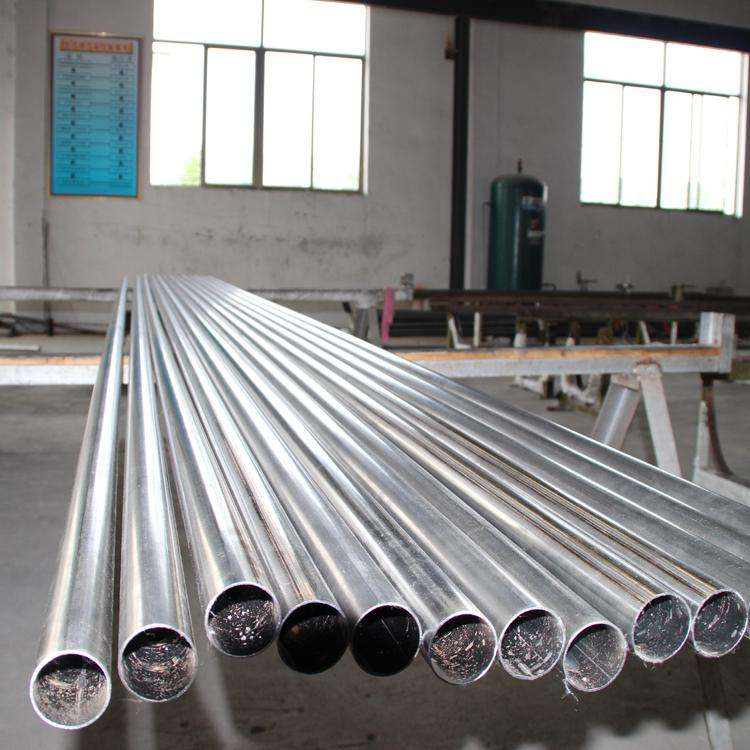Before placing precision galvanized steel pipes on the market, hands-on experiments must be conducted, and our precision galvanized steel pipe factory has a dedicated experimental section. Because the primary market for precision galvanized steel pipes is the construction weighing profession. But this profession has a relatively high requirement for the tensile strength of precision galvanized steel pipes, so how can we improve the tensile strength of precision galvanized steel pipes? Now let's introduce it to us.
At the top of the list, precision galvanized steel pipes can also be tested using eddy current testing instead of hydraulic testing. The experimental pressure or eddy current testing reference sample size should comply with the rules of GB 3092. The mechanical function of steel is an important goal to ensure its ultimate functional use (mechanical function), which depends on the chemical composition and heat treatment criteria of the steel. In the steel pipe standard, according to different application requirements, the stretching function (precision galvanized steel pipe tensile strength, yield strength or precision galvanized steel pipe, elongation), hardness and durability goals, as well as high and low temperature functions required by users, are specified.

Secondly, the tensile strength of precision galvanized steel pipes( σ b) The maximum force (Fb) that the specimen bears during the tensile process at the time of fracture, obtained from the original cross-sectional area (So) of the specimen( σ), It is called the tensile strength of precision galvanized steel pipes( σ b) , in N/mm2 (MPa). It indicates the maximum ability of metal materials to resist damage under tensile effects. In the formula: Fb - the maximum force borne by the specimen during fracture, N (Newton); So - Original cross-sectional area of the sample, mm2. Precision galvanized steel pipe: a metal material with a yielding phenomenon, and the stress at which the specimen can continue to elongate without adding force (maintaining stability) during the stretching process, is called precision galvanized steel pipe. If the force drops, the upper and lower precision galvanized steel pipes should be distinguished. The unit of precision galvanized steel pipe is N/mm2 (MPa). Upper precision galvanized steel pipe: The maximum stress before the initial decrease of force due to the bending of the sample; Lower precision galvanized steel pipe: The minimum stress in the yielding stage when the initial instantaneous effect is not considered. In the formula: Fs - bending force during the tensile process of the specimen (stable), N (Newton) So - original cross-sectional area of the specimen, mm2. Elongation after fracture:( σ) In a tensile experiment, the percentage of the length added to the gauge length of the specimen after breaking compared to the original gauge length is called elongation.
Thirdly, with σ Indicates that the unit is%. In the formula: L1- gauge length of the sample after fracture, mm; L0- Original gauge length of the sample, mm. Section reduction rate:( ψ) In a tensile experiment, the maximum reduction in cross-sectional area at the reduced diameter of the specimen after breaking is called the percentage of the original cross-sectional area, which is called the cross-sectional reduction rate. with ψ Indicates that the unit is%. In the formula: S0- Original cross-sectional area of the sample, mm2; S1- The minimum cross-sectional area at the reduced diameter of the specimen after fracture, mm2. Hardness target: The ability of metal materials to resist the indentation of hard objects on the surface is called hardness. According to different experimental methods and application ranges, hardness can be further divided into Brinell hardness, Rockwell hardness, Vickers hardness, Shore hardness, microhardness, and high-temperature hardness. There are three commonly used types of pipes: Brinell, Rockwell, and Vickers hardness. Brinell hardness (HB): Using a certain diameter steel ball or hard alloy ball
Post time: Jul-10-2023

